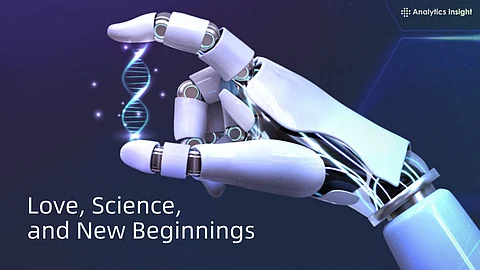After nearly two decades of unsuccessful attempts to conceive, a couple has achieved pregnancy thanks to an innovative artificial intelligence system. After enduring 15 cycles of in vitro fertilization (IVF) without success, the couple’s fortunes changed with the introduction of the STAR system, developed at the Columbia University Fertility Center. This technology has proven particularly pivotal for the husband, who had been diagnosed with azoospermia, a condition marked by the absence of sperm in the ejaculate.
Understanding the STAR System
The STAR system, or Sperm Track and Recovery, utilizes a sophisticated AI-driven algorithm to pinpoint “rare sperm” that even experienced embryologists may overlook. As Dr. Zev Williams, the director of the Columbia University Fertility Center and creator of STAR, explained in an interview with Time Magazine, “I compare it to looking for a needle buried in a thousand haystacks.” The process begins with a fluidic chip, where the husband’s semen sample is gradually introduced. Once the AI identifies viable sperm, it redirects that fraction into a secondary tube for fertilization or cryopreservation.
In tests comparing the STAR system with traditional methods, researchers found that the AI could identify sperm even when embryologists failed to detect any after two days of analysis. Within just one hour, STAR successfully isolated 44 sperm from a sample that had previously been deemed devoid of viable sperm. “The embryologists worked very hard. They didn’t want to be upstaged by a machine,” noted Dr. Williams.
A Journey to Parenthood
In March 2023, the couple provided a semen sample that was processed through the STAR system. Within two hours, the AI successfully isolated viable sperm, which were then used to fertilize the wife’s eggs later that same day. A few days later, embryo transfer occurred, and the couple is now four months into a healthy pregnancy.
The implications of this advancement are significant, particularly in the realm of male infertility. Azoospermia affects approximately 1% of men and accounts for around 10% of male infertility cases. Causes range from blockages in the reproductive tract to genetic disorders and exposure to harmful substances. Until now, many men diagnosed with azoospermia were often told that biological fatherhood was unattainable.
The STAR system offers a gentle approach to sperm retrieval, utilizing a combination of artificial intelligence, high-speed imaging, and robotics without the need for harsh chemicals or lasers. “It can pick up and harvest even the lowest numbers of sperm,” Dr. Williams explained.
Looking ahead, researchers are optimistic about enhancing the STAR system to increase the success rates of IVF procedures. Dr. Williams envisions a future where technologies like STAR will transform the journey for couples facing infertility. “The vision is to create technologies so that people who are told ‘you have no hope of having a child’ can go on to have healthy children,” he stated.
This breakthrough represents not only a personal victory for one couple but also a significant leap forward in reproductive technology, potentially altering the landscape of fertility treatment for many couples around the world.
